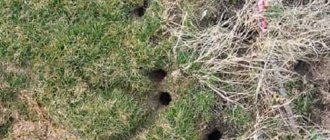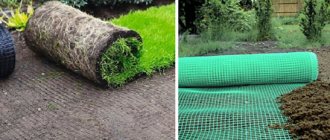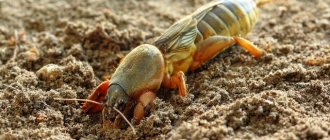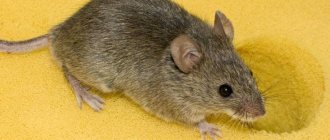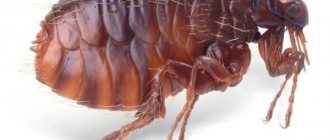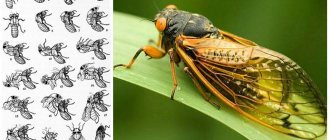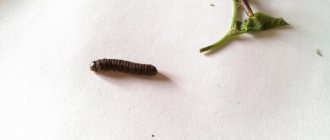- Prevention
The need to get rid of shrews - the smallest and most charming insectivorous predators - is assessed by gardeners and gardeners in two ways. On the one hand, these mammals destroy insect pests and do not eat either cultivated or lawn plants, but on the other hand, they damage their roots, digging up the ground in search of food, and if they dig up the entire garden, they can cause serious damage to the crop.
The shrew (pictured) holds the title of the smallest mammal on the planet
Before getting rid of shrews in your summer cottage, you should take into account that under certain conditions these animals do more good than harm. Therefore, when choosing the most effective method of counteraction, you need to understand the nature of their life activity.
general characteristics
The shrew family (Soricidae) belongs to the order of insectivores of the mammalian class. Externally, the shrew is similar to an ordinary mouse , but has a smaller body (from 3.5 to 18 cm long, weighing from 1.2-1.5 to 100-150 grams), with soft fluffy fur of a predominantly gray color and a very long tail. She has small, blind eyes above an elongated muzzle with an elongated proboscis nose and almost invisible ears on her head.
More than 20 species live in Russia, including the ubiquitous common shrew , whose sharp teeth are colored brown due to the presence of iron in the enamel (which explains its name). The body is covered with light brown hair and reaches no more than 8 cm in length and weighs 4-16 grams.
Common shrew (pictured)
From April to September, the female breeds 2-3 offspring, numbering from 4 to 14 cubs, bearing them for 13-28 days. 4 weeks after birth, the animals are ready for independent life, the duration of which is about 18 months.
When a mother shrew moves with her offspring, you can see them holding onto each other's tails with their teeth, as if they were playing "train"
Rating of the best mole repellents and repellents
| Nomination | place | Name of product | price |
| The best remedies for moles in the form of poisonous baits | 1 | Argus gel | 47 ₽ |
| 2 | Russian trap | 600 ₽ | |
| 3 | Green house | 402 ₽ | |
| 4 | GEX Mole Killer | 1290 ₽ | |
| The best ultrasonic mole repellers | 1 | Topnado OZV.01M | 1050 ₽ |
| 2 | Sititek Grom-Profi Led+ | 3490 ₽ | |
| 3 | Ecosniper LS-997M | 1600 ₽ | |
| 4 | Remiling terminator GA 1584 | 899 ₽ | |
| The best anti-mole remedies in tablet form | 1 | Alphos-Krot+ | 90 ₽ |
| 2 | Detia | 676 ₽ | |
| 3 | Stop-a-mole | 150 ₽ | |
| 4 | Antikrot Dakfosal | 150 ₽ |
Distinctive features of shrews and habitat
For shrews to appear on a summer cottage, certain conditions are required. They choose well-moistened soil, since the hard soil does not allow them to dig even shallow holes with narrow earthen passages. Therefore, animals prefer shaded places with dense vegetation near bodies of water or in areas that are watered on a regular basis. If there is a greenhouse in the garden, then the shrew will definitely get inside through the underground labyrinths.
Animals use dry leaves and branches to insulate their underground nests
Shrews make their nests underground from dry branches and leaves, as a rule, in other people's burrows, free from their previous owners - moles, mole rats and field mice. At the same time, the animals stay apart and militantly defend the boundaries of their territory from their relatives. Special glands secrete a pungent musky odor , which allows them to repel natural enemies (the exceptions are owls, ferrets and weasels).
Researchers have discovered a strange, unique ability of shrews, the so-called “Denel effect,” when in the fall young animals experience a decrease in body size and a flattening of the skull. This phenomenon is due to the fact that in winter they do not hibernate, and the volume of their usual food is reduced. From April to June, body parameters increase to their previous sizes.
An animal eats an amount of food equal to its own weight in three hours, and dies from seven-hour hunger.
Voracity is directly related to the small size of these warm-blooded animals
Maintaining a constant body temperature and accelerated metabolism force animals to spend time around the clock in search of food , taking a short break to sleep. Their day is divided not into day and night, but into periods for sleeping and hunting. Different species of shrews have their own days: some divide them into 10 periods, others, for example, the shrew, go to bed 78 times in 24 hours and wake up the same number of times in order to get food for themselves.
In spring and summer, the diet of these predators includes a large number of beetles and their larvae, other insects and earthworms; they can also attack frogs, lizards and young small rodents. In winter, even under the snow, they find sleeping insects and plant seeds.
Harm and benefit
Whether it is necessary to get rid of the presence of these animals on the site is an open question, since the real benefits they bring are obvious, and each gardener can assess the harm they cause in their own way. In order not to engage in lengthy reasoning, we present the main arguments in the table:
| Benefit | Harm |
| They destroy beetles, slugs, parasite larvae and other harmful insects that live underground in hard-to-reach places. They fertilize and loosen the soil, which saturates it with oxygen. Destroy small rodents - mice. Do not eat underground parts of plants | They damage the root systems of cultivated plants and leave a large number of burrows due to active movement through underground passages in search of food. |
Beneficial pollinating insects, such as bees, also suffer from shrews - a nimble insectivore can destroy up to four bees in an hour
If you still intend to fight these small predators, then they can not only be exterminated with the help of pesticides. There are many other, humane ways to drive away or scare away animals.
How does ultrasound affect moles?
Everyone knows about moles’ poor eyesight, but their hearing is fine. They hear each other very well, being in different holes. They also hear footsteps of people on the surface. And all this with completely undeveloped ears! Yes, moles hear very well, much better than humans. Their hearing aid is able to pick up vibrations that are inaccessible to the human ear. We are talking about ultrasonic vibrations. These animals are also very sensitive to soil vibrations. They become anxious before an earthquake, this is a known scientific fact.
It turns out that with the help of sound vibrations, moles can be scared away. If you make a sound at a certain frequency, it will cause severe discomfort in the animals and force them to leave the dangerous territory. By and large, it makes no difference what will scare off moles - ultrasound or normal sound; they will react equally to both. Here the point is different: ordinary sound will be audible to a person, but his hearing aid is unable to perceive ultrasonic vibrations.
Methods of counteraction
Of the methods used today, the most effective can be considered the one that is safest for humans and pets. When there are few animals, then in order to get rid of shrews in a summer cottage, it is advisable to use preventive, physical and folk methods of repelling. If their population increases, which leads to serious crop losses, unfortunately, it will not be possible to do without radical control methods.
Prevention
To prevent the appearance of the pest, preventive work is carried out:
- install a barrier in the form of a fine mesh made of plastic or metal along the perimeter of the garden (to a depth of 1.5 m);
- dig up the land to a depth of 20-25 cm;
- lay a fine metal mesh before sowing lawn grass.
Traditional methods
Various homemade devices for scaring away animals and traps with bait are considered proven and quite effective in use.
To make the simplest mechanical repellers, ordinary household waste is used - tin, plastic or glass jars and bottles.
To remove shrews from the site, experienced gardeners advise:
- dig bottles into the ground at an angle of 45° or wooden sticks with tin or plastic cans on them. Under the influence of wind, a noise or hum arises in them, scaring away the animals;
- plant low-growing marigolds, onions, garlic, mint, lentils, hazel grouse, legumes and other plants that have a persistent aroma around the perimeter of the garden.
To scare away shrews, a pipe with a door that opens only inward is installed in the underground tunnel. Earthworms are placed in it as bait. After the trap is triggered, the animal is taken far beyond the boundaries of the summer cottage.
Physical
The most effective and simplest way to get rid of shrews in the countryside is with ultrasonic devices that affect the animals’ well-developed hearing organs, causing them to feel panic, forcing them to go in search of a quieter home.
"Grad 550 UZ" generates high-volume ultrasound, which has an uneven wave pattern, which prevents pests from becoming accustomed to the action of the device
Ultrasonic devices create sound of a certain frequency, which spreads over approximately 400-500 m2 or more (depending on the modification). For example, the action " Tornado OZV.01" is based on the settings of an electronic timer. A vibrating sound (lasting 10-15 seconds) is heard every 45-50 seconds and, amplifying many times, spreads over an area of up to 1000 m2.
Chemical
This method is the most radical way of pest control and is used when too many holes interfere with the normal growth of vegetables, cereals and other crops, and root crops literally fall into the ground.
These chemicals contain toxic substances that cause paralysis of the respiratory system, causing animals to quickly die.
Rodenticide preparations of domestic and foreign production
Among the most effective pesticides (rodenticides) are:
- "Hunter Antirodent";
- "Nutcracker";
- "Rat Death"
It is important to remember that children, pets and beneficial insects can be harmed by chemicals. When working with pesticides, you must strictly observe safety precautions and not violate the dosage specified in the instructions.
Poisonous baits
Poisonous baits against moles
Poison against moles and shrews is used if other control methods do not give the desired result. The product is produced in the form of granules, tablets, gel, paste, briquettes. They bury it in the ground throughout the area and throw it into a hole. The poison acts very quickly. Attracts animals by smell.
Once in the stomach, it disrupts the functioning of the nervous system, causing muscle paralysis and death. Or it causes internal bleeding and suffocation. Death occurs within a few hours. The effect of poison remaining in the ground for a month is neutralized.
Review
I am not a supporter of cruelty to animals, but I had no choice. I have already tried everything, the bumps in the area only became more numerous. Young trees began to dry out. The poison acts very quickly. Almost everyone died within a week.
Sergey, Voronezh
Reviews from gardeners
Konstantin, 64 years old, Rostov
The simplest methods helped to scare away shrews from a summer cottage: acoustic and “aromatic”. Before the autumn digging of the garden, dried marigolds crushed into dust were scattered, and rags soaked in turpentine were buried along the entire border of the plot. Pieces of rotten fish were placed in the holes. In case the shrews bypassed the bait, additional metal reinforcement was dug into the garden bed at a slight angle to the ground, to a depth of 40-50 cm. A plastic bottle was placed on it, which moved with a light blow of wind, and the noise from the vibration of the steel rod scared away the animals. Champagne bottles, also at an angle, were buried in the ground - the effect was the same - an unbearable roar was heard.
Veronica, 56 years old, Ryazan region
In the garden plot we did not decide to use poison or traps for humane reasons, so we save ourselves from shrews using the Grad ultrasonic device. I insert batteries into the device, seal it in a plastic bag and dig it near the holes to a depth of 10 cm. After 2-3 weeks I observe the complete disappearance of the pest. At the same time, ultrasonic waves do not have a harmful effect on animals and people.
Semyon, 48 years old, Krasnodar region
In my apiary in mid-November, a shrew got into the habit of emptying the hives. It is more dangerous than ordinary mice because it is small and very voracious. To drive it away, I placed a fine-mesh (size 6 mm) grate between the bottom and the lower body, but the tight holes prevented the bees from exiting. In March I replaced it with a mesh with 8-10 mm cells. In addition, I cleaned the hives of dirt and placed a pollen collector on the entrance. After that, all the problems with pests disappeared.
The most effective method
Fumigants
Considering that these rodents lead an underground lifestyle, independent destruction of moles is an ineffective and complex process, which often turns into a headache for the owner of the land. In this regard, to solve the problem of unwanted underground guests, as a rule, they resort to the help of professional experts.
Pest control experts carefully examine the land plot and install special mechanical traps in different places, which are usually checked every three days until the parasites are completely removed from the cultivated land.
Use of magnesium and aluminum based fumigants
Fumigants are special chemical compounds that kill harmful animals with gas released. Professionals very often use fumigants to combat moles, since they are very effective in the fight against underground rodents. In the vast majority of cases, fumigants for controlling moles are special tablets that must be placed in holes according to the official instructions for the chemical preparation. The main fumigants against moles today are Magtoxin, Phostoxin, as well as some other, less popular ones. They belong to hazard class 1 pesticides!
ATTENTION. According to SanPiN 1.2.2584-10 “Hygienic requirements for the safety of processes of testing, storage, transportation, sale, application, neutralization and disposal of pesticides and agrochemicals.” POINT: 2.8. All work with pesticides of hazard classes 1 and 2 , as well as the use of restricted-use pesticides, is carried out only by persons with special professional training. Involvement in carrying out work using pesticides of persons who have not been trained in the safe handling of these products is not permitted.
Why fumigation is the best method
Let's look at the use of a fumigant using the example of the drug Phostoxin and Magtoxin for moles:
Fumigants based on aluminum and magnesium have excellent activity. They quickly and easily penetrate the soil. The active substance of such drugs effectively destroys adult moles and their offspring. The effectiveness of such drugs has been proven more than once. This is the best way to get rid of moles on the site.
It is worth noting that magnesium-based fumigants decompose much faster than products that contain aluminum phosphide. The maximum concentration of the isolated active substance in chemicals with magnesium is achieved after 24–36 hours. For comparison, over a similar time period and under the same conditions (temperature 20 ° C and humidity 60%), products based on aluminum phosphide release approximately 72% of hydrogen phosphide, while magnesium phosphide is released almost completely.
Contacting the professionals of our company has a number of advantages:
